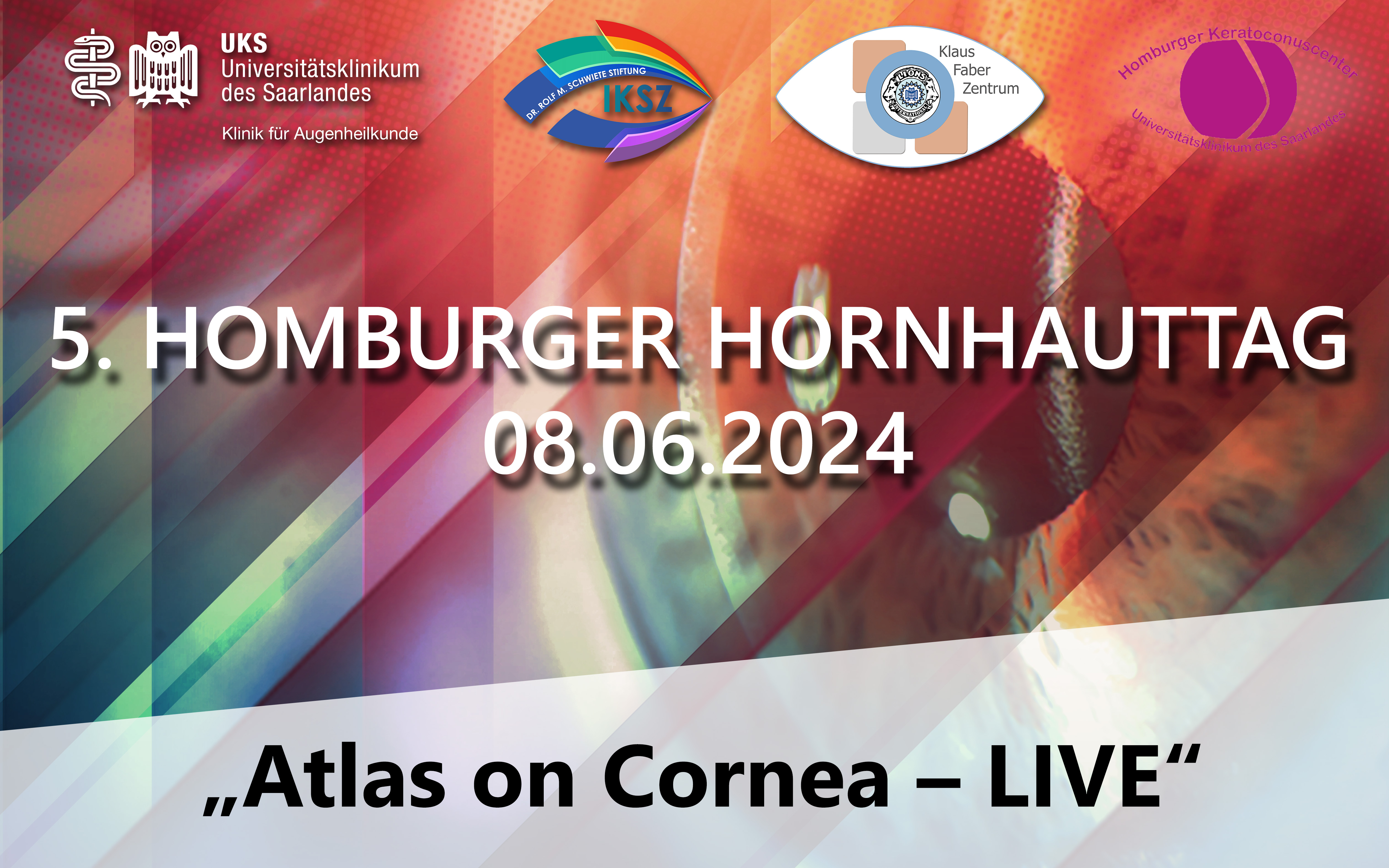Prof. Dr. B. Seitz, Homburg/Saar
„White Dot Syndrome“ an der Hornhaut
PD Dr. T. Dietrich-Ntoukas, Berlin
Wie beeinflussen Atopie, Neurodermitis und Rosazea die Hornhautoberfläche?
Prof. Dr. B. Bachmann, Köln
High-risk Keratoplastik: Immunreaktionen verstehen, verhindern und behandeln
Prof. Dr. P. Steven, Köln
Mehr als Sicca – Graft-versus-Host-Disease und trockenes Auge
Dr. L. Hamon, Homburg/Saar
Vom harmlosen Infiltrat bis zur Perforation – das Spektrum bakterieller Keratitiden
Dr. L. Daas, Homburg/Saar
Die Pilzkeratitis ist auf dem Vormarsch!
Prof. Dr. N. Szentmáry, Homburg/Saar
Kontaktlinsenträger aufgepasst – die Akanthamöbenkeratitis
Prof. Dr. U. Schlötzer-Schrehardt, Erlangen
Differenzialdiagnose Fuchs Dystrophie vs PEX Keratopathie
Prof. Dr. Z. Gkatzioufas, Basel
Intrakorneale Ringsegmente – welche, wann und bei wem?
Prof. Dr. B. Seitz, Homburg/Saar
Welches ist die richtige Schublade? – Die allerneueste IC3D-Klassifikation der Hornhautdystrophien
Prof. Dr. Ashley Behrens
Gottfried O.H. Naumann Keynote-Lecture
“Corneal transplantation: a constant evolution throughout the past century“
PD Dr. Dr. J. Ehrchen Münster
Lyell-, Stevens-Johnson- oder Fuchs-Syndrom und ihre Auswirkungen auf das Auge
Dr. K. Xanthopoulou, Thessaloniki
Korneales Crosslinking – nicht zu spät!
Prof. Dr. F. Kruse, Erlangen
Therapieoptionen der Limbusstammzellinsuffizienz
Dr. C. Holtmann, Düsseldorf
Wenn‘s nicht heilen will – Optionen bei neurotropher Keratopathie
PD Dr. E. Flockerzi, Homburg/Saar
Korneale Biomechanik – Interpretation der Deformation
Prof. Dr. B. Seitz, Homburg/Saar
Lamellär versus perforierend – das Deutsche Keratoplastik-Register
Prof. Dr. M. Resch, Budapest
Graft, Patch oder Sandwich – Integration nach verschiedenen Varianten der Amnionmembrantransplantation
Dr. S. Suffo, Homburg/Saar
Akute Traumaversorgung und Rekonstruktion
